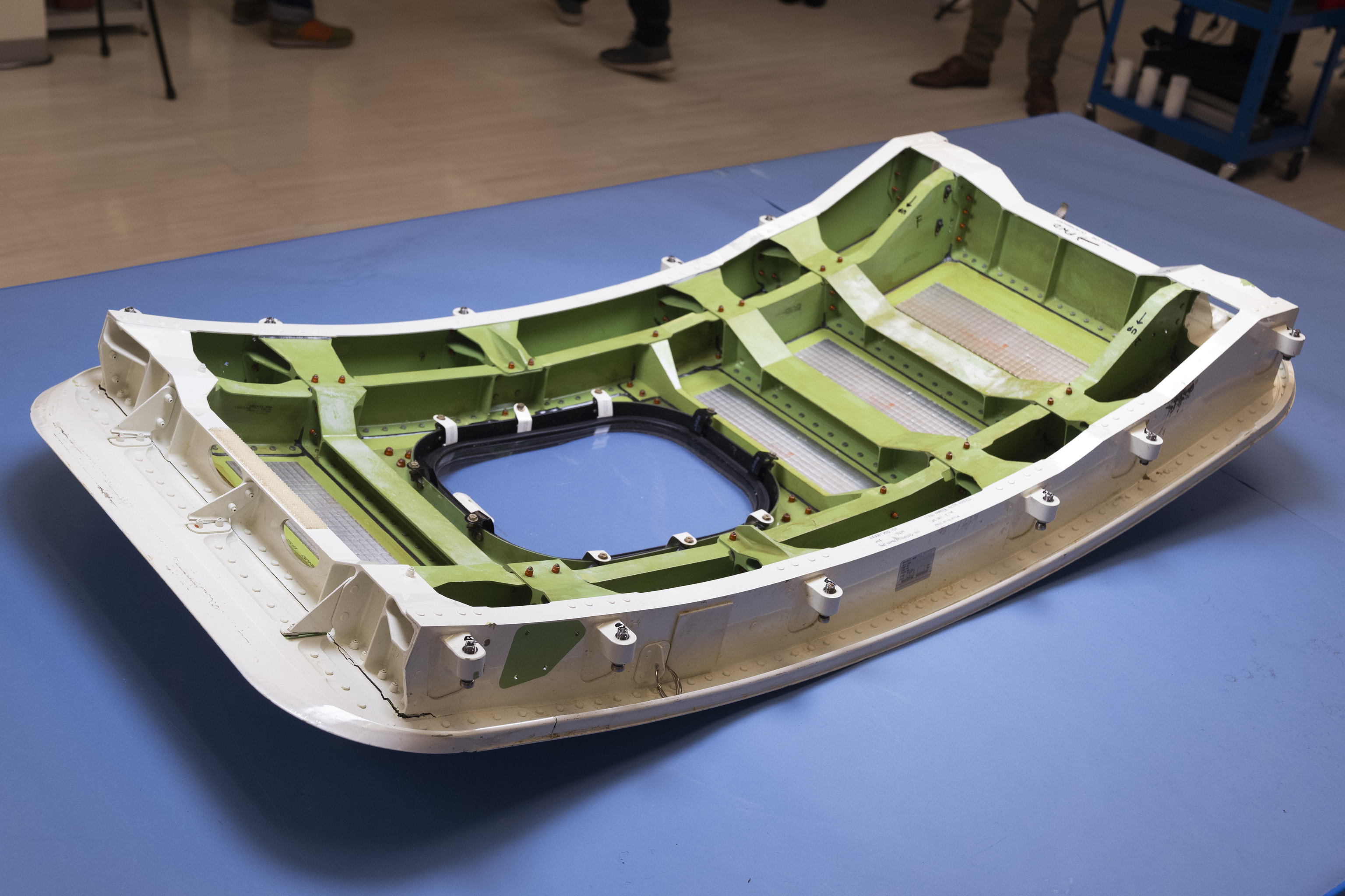Investigators are questioning Boeing officials in hearings this week about the midflight blowout of a panel from a 737 Max, an accident that further tarnished the company's safety reputation and left it facing new legal jeopardy.
The National Transportation Safety Board's two-day hearing, which began Tuesday morning, could provide new insight into the Jan. 5 accident that caused a loud boom and left a gaping hole in the side of the Alaska Airlines jet.
"This was quite traumatic to the crew and passengers," NTSB Chair Jennifer Homendy said as the hearing began Tuesday, speaking to anyone who may have been on the flight or knew someone aboard. "We are so sorry for all that you experienced during this very traumatic event."
The NTSB said in a preliminary report that four bolts that help secure the panel, which is call a door plug, were not replaced after a repair job in a Boeing factory, but the company has said the work was not documented. During the hearing, safety board members are expected to question Boeing officials about the lack of paperwork that might have explained how such a potentially tragic mistake occurred.
"The NTSB wants to fill in the gaps of what is known about this incident and to put people on the record about it," said John Goglia, a former NTSB member. The agency will be looking to underscore Boeing's failures in following the process it had told the Federal Aviation Administration it was going to use in such cases, he said.
The safety board will not determine a probable cause after the hearing. That could take another year or longer. It is calling the unusually long hearing a "fact-finding" step.
The first witnesses called Tuesday included Elizabeth Lund, Boeing's senior vice president of quality — a new position — since February.
Boeing supplier Spirit AeroSystems installed the door plug, a panel on many 737s that fills a cutout left for an extra exit required on some planes. The plug on the Alaska Airlines jet was removed and the bolts taken off in a Boeing factory to repair rivets.
Witnesses for Spirit and Boeing testified about safety systems and inspection processes. Lund said production of Max jets dropped below 10 per month after the Alaska Airlines blowout and has increased. but remains under 30 per month.
Later Tuesday, witnesses are expected to testify about the opening and closing of the door plug and the FAA's oversight of Boeing.
FAA Administrator Mike Whitaker has conceded that his agency's oversight of the company "was too hands-off — too focused on paperwork audits and not focused enough on inspections." He has said that is changing.
The plane involved had been delivered to Alaska Airlines in late October and had made only about 150 flights. The airline stopped using the plane on flights to Hawaii after a warning light indicating a possible pressurization problem lit up on three different flights.
The accident on flight 1282 occurred minutes after takeoff from Portland, Oregon, as the plane flew at 16,000 feet (4,800 meters). Oxygen masks dropped during the rapid decompression, a few cell phones and other objects were swept through the hole in the plane, passengers were terrified by wind and roaring noise, but miraculously there were no major injuries. Homendy said Tuesday that seven passengers and one flight attendant received minor physical injuries.
The pilots landed safely back in Portland. The door plug was found in a high school science teacher's backyard in Cedar Hills, Oregon.
No one from the airline was called to testify this week before the NTSB. Goglia, the former safety board member, said that indicates the agency has determined "that Alaska has no dirty hands in this."
Tension remains high between the NTSB and Boeing, however. Two months after the accident, board Chair Jennifer Homendy and Boeing got into a public argument over whether the company was cooperating with investigators.
That spat was largely smoothed over, but in June a Boeing executive angered the board by discussing the investigation with reporters and — even worse in the agency's view — suggesting that the NTSB was interested in finding someone to blame for the blowout.
NTSB officials see their role as identifying the cause of accidents to prevent similar ones in the future. They are not prosecutors, and they fear that witnesses won't come forward if they think NTSB is looking for culprits.
So the NTSB issued a subpoena for Boeing representatives while stripping the company of its customary right to ask questions during the hearing.
The accident led to several investigations of Boeing, most of which are still underway.
The FBI has told passengers on the Alaska Airlines flight that they might be victims of a crime. The Justice Department pushed Boeing to plead guilty to a charge of conspiracy to commit fraud after finding that it failed to live up to a previous settlement related to regulatory approval of the Max.
Boeing, which has yet to recover financially from two deadly crashes of Max jets in 2018 and 2019, has lost more than $25 billion since the start of 2019. Later this week, the company will get its third chief executive in 4 1/2 years.
Testimony from NTSB hearings is not admissible in court, but lawyers suing Boeing over this and other accidents will be watching, knowing that they can seek depositions from witnesses to cover the same ground.
"Our cases are already solid — door plugs shouldn't blow out during a flight," said one of those lawyers, Mark Lindquist of Seattle. "Our cases grow even stronger, however, if the blowout was the result of habitually shoddy practices. Are jurors going to see this as negligence or something worse?"
